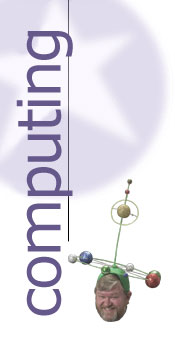Computer Virus Attacks
Should Be Planned For
by Lloyd Borrett
Technical Cornucopia, December 1990
In the last eighteen months many horror stories and dire
warnings have been published about the risk of damage from
potentially serious computer viruses. In particular the
"Friday the 13th", "Stoned", "Invader" and "AIDS" viruses
have been widely discussed.
"Computer virus" is a term often used to describe any
self-replicating software that can, under certain
circumstances, destroy information in computers or disrupt
networks. Other examples of malicious software are "Trojan
horses" and "network worms." Viruses can spread quickly and
can cause extensive damage. They pose a larger risk for
personal computers which tend to have fewer protection
features and are often used by non-technically-oriented
people.
The virus problem is real
The fact is that virus attacks are now a very real
problem in the computer world. The instance of such attacks
is much higher than has been reported in the press as few
companies are likely to want it publicly known that they
became a victim! We have seen many of the more common
viruses for ourselves on customer's systems.
As of the end of November 1990, we know of at least 144
separate virus strains and 223 virus sub-strains (varieties)
for IBM PC and compatible computer systems! These 144
viruses include the 10 most common viruses which account for
over 95% of all reported PC infections.
Virus characteristics and typical damage
Most of the known computer viruses infect the host
computer in more than one way and typically three or four
ways. The characteristics of the infections are:
- Infect fixed disk partition table
- Infect fixed disk boot sector
- Infect floppy diskette boot sector
- Infect overlay files
- Infect EXE files
- Infect COM files
- Infect the command shell COMMAND.COM
- Virus remains resident
- Virus uses self encryption
The damage done to the host system by a virus varies, but
usually has at least one of the following characteristics:
- Corrupts or overwrites the boot sector
- Affects system run-time operation
- Corrupts program or overlay files
- Corrupts data file
- Formats or erases all/part of disk
- Directly or indirectly corrupts file linkages.
Reduce your risks
Only foolish people would ignore the warnings and fail to
prepare a plan of action to increase the level of protection
against viruses on their computer systems. Routinely using
good computing practices can reduce the likelihood of
contracting and spreading any virus and can minimize its
effects if one does strike. Advice from the experts
includes:
- Make frequent backups of your data, and keep several
versions.
- Use only software obtained from reputable and
reliable sources. Be very cautious of software from
public sources, such as bulletin boards, or software
sent across personal computer networks.
- Don't let others use your computer without your
consent.
- Use care when exchanging software between computers
at work or between your home computer and your office
computer.
- Back up new software immediately after installation
and use the backup copy whenever you need to restore.
Retain original distribution diskettes in a safe
location.
- Learn about your computer and the software you use
and be able to distinguish between normal and abnormal
system activity.
- If you suspect your system contains a virus, stop
using it and get assistance from a knowledgeable
individual.
In general, educating users is one of the best, most
cost-effective steps to take. Users should know about
malicious software in general and the risks that it poses,
how to use technical controls, monitor their systems and
software for abnormal activity, and what to do to contain a
problem or recover from an attack. An educated user is the
best defence most organizations have.
Help is available
A number of commercial organisations sell software or
services that may help detect or remove some types of
viruses. Unfortunately many of these programs offer little
real protection and most can only handle a limited subset of
the known viruses.
Typically, the anti-virus programs available come in
three parts. The first part tries to prevent a virus getting
on to your hard disks and floppy disks. The second part
attempts to detect viruses already on the system. The final
part helps you recover from an attack by a know virus.
But there are many types of viruses, and new ones are
appearing all the time. Thus it is very hard for any product
to guarantee to be able to identify all viruses. It is also
very easy for the creator of a virus to program around the
known limitations of the anti-virus programs.
Fortunately, a few of the anti-virus programs are
continually updated (e.g. every few weeks) and these updates
are included for a specified period as a part of the
purchase. Beware of any anti-virus program that does not
offer such a facility for it will quickly become outdated.
And remember: the worst thing you could do is to ignore
the problem and simply pretend that computer viruses don't
exist!
Last modified: 6:59 am Thursday 25 September 2025
Local time: 4:43 pm Sunday 5 October 2025
|


